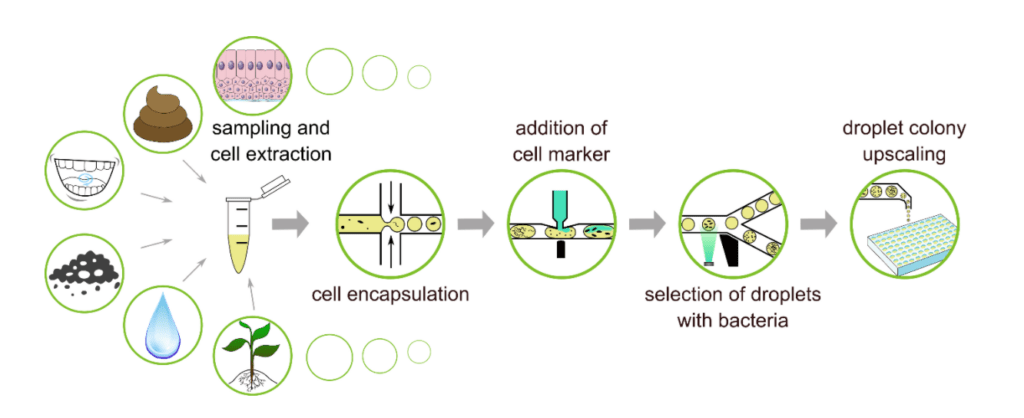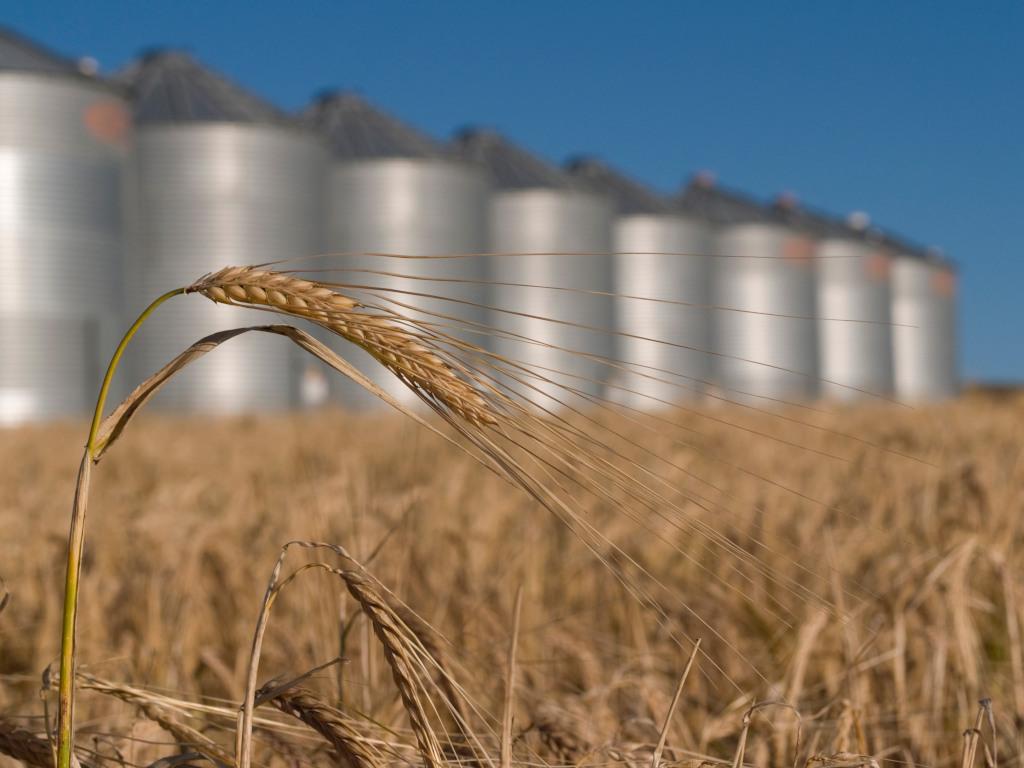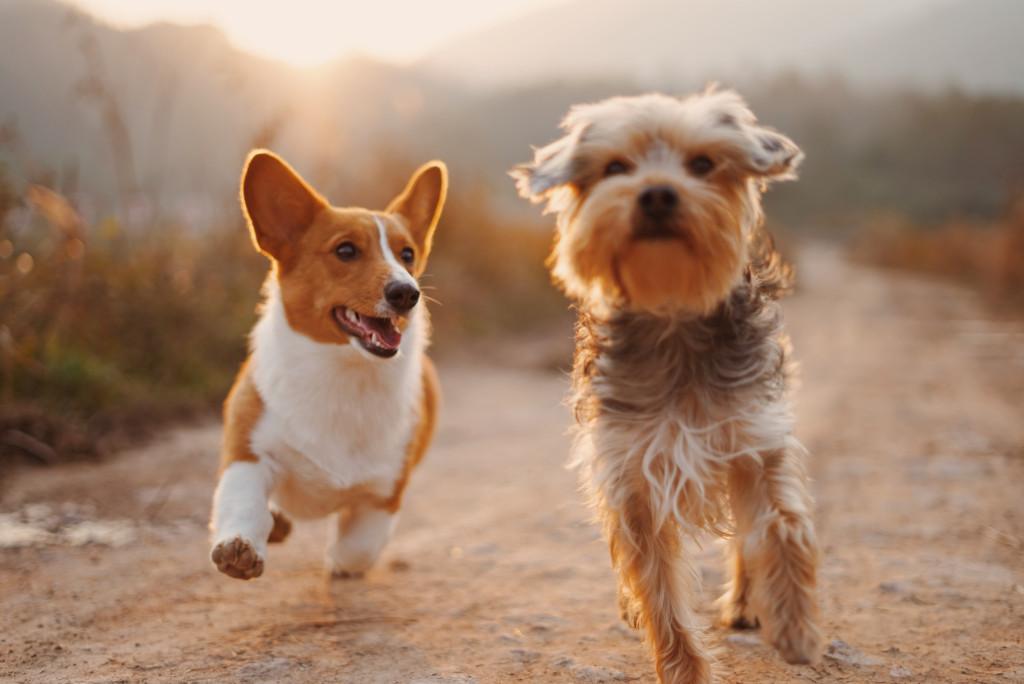Technology
Biomillenia has great expertise in creating highly diverse cell banks, including rare and previously uncultured species. Our robust workflows have been already validated with source materials such as animal feces ( wild, domestic and farmed species), human samples ( feces, skin, mouth…), agriculture ( soil, leaves, roots…) or environmental materials.

After extraction, microorganisms are encapsulated in tens of millions of microscopic bioreactors. This allows parallelization of bacterial growth between individually isolated microorganisms in extremely small volumes. These cultures can be generated and maintained under aerobic or anaerobic conditions. Other culturomic factors such as incubation time, choice of medium or temperature are also adjusted to achieve optimal growth. This unique culture environment significantly improves the diversity of the cultured microbiota compared to traditional culture methods, resulting in bacterial cell banks containing a wide range of bacterial strains from the original sample, including previously uncultured bacteria.
guaranteed monoclonality of cultures
flexible identification:
hypervariable regions (e.g. V4), full-length 16SrRNA sequencing, whole genome sequencing
traceability from sample to microorganism
Delivery of “Master cell bank ready” cryotubes or MTP
And all our strain banks come with a free one month strain-bank backup, so if anything happens during shipment, the collection will not be lost!
Real case studies

To enable the discovery of new natural small molecules from the human microbiome, Design Pharmaceuticals needed to access new gut strains grown under stringent anaerobic conditions. The unique strains captured in our microfluidic system showed interesting GPCR activation profiles.

An AgTech* startup looking to develop novel biofertilizers and biocontrol agents needed a strain bank representing the microbiome associated to a specific industrial crop worldwide. Working with Biomillenia, fresh samples from around the world were processed and a master strain bank of 100,000 isolates was created.

A major international player* in animal care needed a strain bank from different breeds of pets to identify next-generation probiotic strains for animal care. Samples from pets living in different environments were process with traceability from isolate to original sample to better understand differences between pets living in urban and rural environment.

